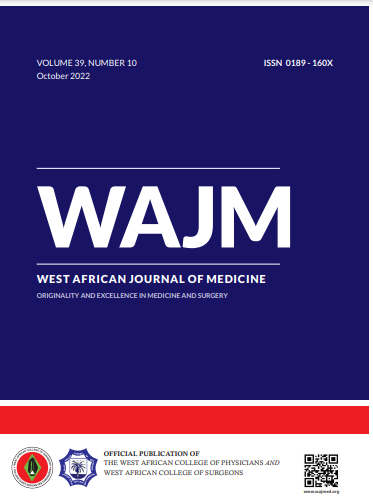ORIGINAL: The Nigerian Dentist: Emerging Trends in Caries Management
West Afr J Med . 2022 Dec 29;39(12):1285-1293.
Keywords:
Caries management; Cariology; Nigerian Dentists.Abstract
Abstract in English, FrenchBackground: Fundamental to effective caries management, are measures that eliminate caries risk factors and increase caries protective factors. These include the use of appropriate and effective caries assessment, diagnostic and teaching methods.
Objectives: To assess the use of current caries management protocols and teaching methods/techniques among Nigerian Dentists.
Methods: A pre-tested self-administered questionnaire was used. Only dentists of Nigerian descent and practicing in Nigeria were assessed. The questionnaire inquired about diagnostic tools, assessment and teaching methods used by the Dentists in caries management.
Results: More than half of the participants reported use of visual (86.3%), tactile method (76.2%) and periapical radiographs (66.2%) at all times for caries diagnosis. More than three quarters had never used electrical conductance, fibre-optic, CAMBRA, ICDAS, laser fluorescence or bacteria count in caries assessment and diagnosis. Among the 38.4% of the respondents who taught courses on cariology, didactic method and demonstration were the commonest methods used, while use of games was the least used. Didactic method was used more by those that had practiced for 10 years and more. This relationship was statistically significant (p= 0.05).
Conclusion: Majority of Nigerian Dentists still depend solely on traditional methods of teaching, assessment and diagnosis of dental caries. Modern caries assessment, diagnostic techniques and teaching methods are needed to improve caries management in order to promote early treatment, which is often preventive.
Keywords: Caries management; Cariology; Nigerian Dentists.
O O Orenuga 1, C L Nzomiwu 2, M O Folayan 3, O H Oderinu 4, A-W O Akinshipo 5


